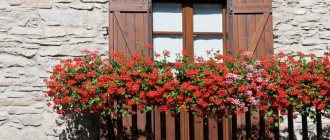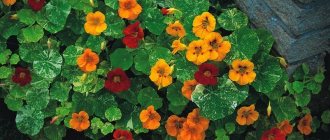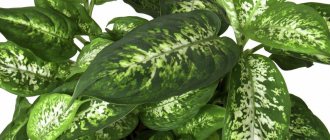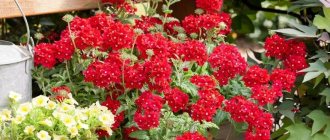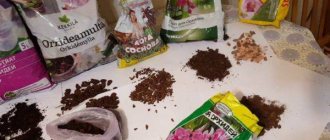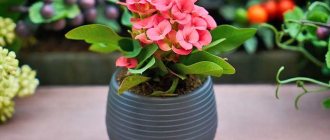The name “violets” is so firmly attached to the delicate and touching Saintpaulias that the true representatives of the Viola genus are often forgotten in rooms. But not the most suitable for potted format and living spaces, charming pansies can decorate summer window sills and balconies. They are short-lived and require attention, but they reproduce easily. And among the compact, beautifully flowering plants, it is difficult to find equally touching and bright crumbs. The choice of violets is so wide that there is a suitable option to decorate any home.
Viola on the balcony and in the rooms - advantages and disadvantages
What garden violets can grow indoors?
Collected in basal rosettes and sitting alternately on the stems, bright, oval, decorated with beautiful rounded teeth along the edges, violet leaves are almost invisible under their flowers. Single, but blooming in surprisingly large numbers for such a small bush, they flaunt larger lower petals with funny outgrowths at the base and seem irresistible.
With a diameter of 4 to more than 10 cm, viola flowers attract attention with a bright yellow eye, velvety texture of the petals, unique and easily recognizable asymmetry, and an inimitable variety of petal shapes.
Only a few types of garden violets are used as a potted plant to decorate rooms or balconies, most often without distinguishing between “pansies”:
- Wittrock violet (Viola x wittrockiana);
- tricolor violet (Viola tricolor).
They come in numerous hybrid varieties prized for their delightfully varied blooms.
Garden violets (Viola) have always been considered a universal plant and perfect even for novice gardeners. But for potted violas, their status as an unpretentious plant is less relevant. And when transferring to a container format, you should first of all think about the few but obvious disadvantages. It is no coincidence that this garden plant never became the star of greenhouse and interior design.
Wittrock's violet (Viola x wittrockiana). © Koichi Oda
Tricolor violet (Viola tricolor). © Lana37rus
Viola ampelous in a flowerpot, growing from seeds at home
There are many reasons why viola has become very popular in recent years. First of all, this is its bright, unusual appearance, which can please any connoisseur of beauty.
In addition, this plant is very easy to care for, it is quite unpretentious and is suitable for beginning flower growers, as well as for people who are busy with work, but want to give their balcony/veranda/summer cottage more brightness and beauty.
Viola ampelous, or horned (pansy)
Viola hornata (ampelous) is most often an annual plant. In some cases, it remains viable for the second year. The distinctive features of the plant are:
- spherical bush;
- shoots from 40 to 60 cm;
- flowers with a diameter of 4 cm (it all depends on the specific variety);
Ampelous viola or pansy - cultivation and care
- small height - about 20 cm;
- narrow ovoid or oval leaves;
- long flowering period - from late spring to the beginning of frost;
- bright color. It can be either plain or in different colors.
This plant can be found in almost every garden plot; it is loved by all gardeners.
Ampelous viola in a flowerpot
Ampelous pansies have a straight, stable shape only at the initial stage of development, after which their stems begin to droop. Therefore, the best option for planting them is to grow them in pots or decorative baskets. Caring for it is not difficult; the pots can be hung outside immediately after the threat of spring frosts has passed.
For your information! There are many varieties for growing hanging viola in this way.
Varieties of ampelous viola
To date, many varieties of ampelous viola have been bred. Growing them is not difficult and even pleasant. The size of the flowers, their varied colors, indescribable aroma, fairly wide bushes - all this will allow you to create a real greenhouse on your balcony for the whole summer.
Cool Wave Mix Improvd
Pansies - planting seeds in open ground
This variety is considered the most popular among others due to its resistance to temperature changes, brightness and variety of colors, splendor and unpretentiousness.
Characteristics of Cool Wave Mix Improvd:
- height 15-20 cm, shoot length up to 60 cm;
- flower diameter - 5 cm;
- bright, interesting, very decorative colors;
- intensive flowering over a long period of time;
- high tolerance to adverse natural conditions.
This plant will fit perfectly into the interior of balconies, open verandas, patios, and will decorate any flower bed. It always blooms with an abundant large waterfall, which is impossible not to pay attention to.
Important! This species can also be used as a ground cover plant.
Viola ampelous Cool Wave Mix Improvd
Old Spice Mix
An interesting variety of pendant viola, the beauty and aroma of which will appeal to more than one admirer of beauty. Characteristics of Viola Spice:
- compactness. Not wide bushes, the diameter of which reaches 30 cm;
- long shoots with flowers of various colors;
- each flower in the mix has a separate, indescribable aroma;
- the flowers are edible. They can be used to decorate salads or desserts. Nowadays such jewelry is very popular.
This variety should not be planted in a place that is too sunny. Under the scorching rays of the summer sun, the flowers of the plant become small. It is better to provide them with partial shade.
Viola ampelous Old Spice Mix
Hederacea ampelous
Viola hederacea is native to Australia. Quite quickly, this variety spread throughout the United States, Europe and Russia. It is not the most popular variety, but is suitable for those who do not like bright, provocative flowers.
The flowers of the plant are not large, about 4 cm in diameter. Most often they have a delicate lavender color. It stands out for its large, bright green (on the outside) leaves. Hederacea is unpretentious and can be planted outside after the threat of frost has passed.
Hederacea
Growing ampelous viola
To grow ampelous pansies, you don’t need much, but it’s worth paying attention to some parameters that will contribute to a successful result:
- for planting, you should choose loose loamy soil with a neutral acidity level;
- Regular watering should be carried out, but water should not stagnate in the tray of the pot;
- to grow a beautiful plant at home, you should choose the east or west side of the window;
- Pansies do not like any fertilizers, so this point in caring for them can be safely omitted.
Important! Closed balconies or loggias are absolutely not suitable for these colors. A prerequisite for them is open space and fresh air.
Growing from seeds
Growing from seed is the only way to prepare this flower for development in the Russian climate. Seeds for seedlings are planted in late February - early March. The basis for the seedlings will be special boxes; plastic cups or yogurt jars are also suitable.
Note! Before sowing seeds, it is necessary to add mineral fertilizers to the soil and loosen it thoroughly.
How to plant seeds:
- Moisten the soil. Make 5 mm indentations in it every 2 cm. Place seeds there.
- Sprinkle with a layer of soil, cover with film or glass. Place in a warm place.
- Every morning and evening for 10 minutes. lift the film to ventilate the soil.
- When the first two leaves appear, apply the first fertilizing with mineral fertilizers. Subsequently, perform this procedure once a month.
- A month after germination, young plants need to be planted in separate small containers.
- To make seedlings appear earlier, you can use special fluorescent lamps. The optimal length of daylight hours is 14 hours.
Important! To ensure abundant flowering in summer, proper care of seedlings is necessary, starting from the first days of their appearance.
Germination of viola seeds
Watering mode
Ampelous viola does not tolerate complete drying out of the soil; it needs regular watering. It is necessary to water it as the top layer of soil dries. The soil in the pot should always be moist, but not too much. You should not turn a pot with a plant into an analogue of a swamp; if there is excess moisture, the roots of the plant will begin to rot, and it may die.
Planting in flowerpots
Growing viola at home involves planting it in flower pots, flowerpots, wicker baskets, and balcony boxes. Whatever container is planted in, it should be equipped with drainage holes to help avoid moisture stagnation.
Initially, a layer of drainage material is poured onto the bottom of the container in which the pansies will grow. This is very important because the roots of the plant can rot. The minimum thickness of the drainage coating is 3 cm. Suitable soil is poured on top. Viola seedlings must be separated from each other by no less than 10-15 cm, and 1-2 liters of soil should be allocated for each individual bush.
Viola ampelous in a flowerpot
Caring for an adult plant
Mature pansies do not require excessive care. The main components should be watering and lighting. It is also important to ensure that the plant does not get sick. The most common diseases are:
- powdery mildew;
- spotting;
- gray rot.
If signs of any of these diseases are detected, it should be removed immediately so that others do not become infected. For prevention, you can periodically spray with a mixture of soda ash and laundry soap or sprinkle with wood ash.
Important! To give the flowers the desired shape and greater splendor, the stems can be pinched. This must be done before the first flowers appear.
Illumination
This point is as important for plants as watering. Viola ampelous is a light-loving plant, which, however, cannot tolerate prolonged exposure to the bright rays of the sun. She needs light partial shade. A good option would be one in which pansies are grown under a small canopy or canopy.
For your information! If there is insufficient lighting, the flowers will be small and not bright compared to those planted in well-lit areas.
Watering and fertilizing
Watering and fertilizing the plant should be done carefully, without pouring a large amount of liquid into one place. You should start from the edge of the vessel in which the plant grows and gradually move to the middle.
Only mineral fertilizers are suitable for feeding; organic fertilizers are strictly contraindicated. It is best to use ready-made mixtures for flowering plants, sold in gardening and flower shops.
It is better to carry out these procedures in the evening, when there is no risk that the sun can burn the soil or leaves that accidentally fall on top of the fertilizer.
Ampelous viola is one of the most beautiful plants that can be grown both in a summer cottage and on a balcony. It is suitable for any gardener thanks to the many varieties. Some people will like bright, large flowers, while others prefer delicate, almost pearl-colored colors. Everyone will find their own variety that is close to them.
Source: https://pocvetam.ru/komnatnye-rasteniya/ampelnye-rasteniya/viola.html
Disadvantages of potted-balcony violas
Violas are not the most suitable plants for the potted format; they require certain conditions to be created at home and on the balcony. Only a few accommodation options will suit them. And before you decide to consider them as more than just a garden plant, you should weigh all the possible risks. After all, in order for the viola to bloom tirelessly and look fresh, it will still need special attention.
Daily care is the first thing to think about. Even in the garden, lack of moisture leads to the fact that instead of luxurious bushes you have to look at limp, lifeless plants. But if in open ground and flower beds violas come to life in the morning, then on a windowsill or balcony, mistakes in watering can be disastrous.
Even a short drought affects the leaves; you can water the plant only so that the top layer of the substrate dries slightly - avoiding dampness and stagnation of water, but also without lack of moisture. For violas, you will have to water twice a day in the summer, only in the early morning or evening. And without an automatic watering system, this drawback is difficult to mitigate.
It is no easier to satisfy violets’ love for fresh air. They bloom poorly and suffer even on a glassed-in balcony, and on a windowsill they require a special approach. Without constantly opening the doors, refreshing ventilation and free air circulation, nothing will work. This does not mean that it is impossible to grow viola on a windowsill. Can. But with the window slightly open and following all the recommendations as scrupulously as possible.
Viola on balconies is suitable only for those who can provide it with regular care. If you have a trip planned or you are often not at home, and there is no one to care for the plants every day, it is better to exclude it from candidates for landscaping balconies.
Viola on balconies is suitable only for those who can provide her with regular care
Pansies: care in open ground
In the garden, viola seedlings are planted in late spring, when the threat of night frosts has passed. Although viola is a frost-resistant plant, its seedlings are too tender. Especially one that is grown at home. Therefore, it is better not to take risks and time the planting of seedlings to coincide with warm and sunny spring days.
The distance between viola bushes is 10-15 cm. It is useful to throw a handful of baking powder (vermiculite, perlite, sand) into each hole dug under the plant, especially if the soil in the area is dense.
Fertilizers for violas growing in the garden can be applied once every 1-4 weeks. On some soils, flowers require fertilization every week, on others - once a month. This depends on the initial fertility of the soil.
Viola in the open ground
The main advantages of a viola on the balcony and in the room
But all the shortcomings pale before the extraordinary beauty and brightness of the flowering of garden violets. Even the violas moved to the balcony are still charming. And it is very difficult to find an indifferent grower to their beauty.
The main advantages of viola as a balcony plant include the following.
colorful bloom
Few can compete with violas in the beauty of the structure of asymmetrical flowers, their size and color scheme. Small “eyes” and touching veins, watercolor transitions, a combination of dozens of shades or the most dazzling colors - violas always look catchy. Viola flowers remind some of butterflies, others - of magical characters, funny faces and curious elves. But it’s very difficult not to be captivated by their beauty.
Caring for an adult plant
Ampel verbena - growing in a pot, planting and care
Caring for an adult plant includes watering and fertilizing. If we talk about preserving the decorativeness of a flower, then you need:
- ensure temperature conditions within 10–25 °C;
- carry out pruning, including radical pruning, that is, shorten to 5-7 cm from the root;
- protect against fungal diseases (powdery mildew, spotting, gray rot), that is, treat with a fungicide (sprinkle with ash, wash with soap) when the disease appears;
- loosen and weed the root zone.
Growing ampelous viola in compliance with these rules will help achieve optimal results.
Illumination
In central Russia, almost all types of ampelous viola tolerate direct sunlight well. This only increases the abundance of flowering. But if the flower is kept in partial shade, flowering will last longer. In any case, partial shade will be safer for the flower.
Watering and fertilizing
The viola hanging in a flowerpot depends entirely on the person. It will not be possible to extract moisture from the ground. Therefore, plants need daily watering. The soil should not be allowed to dry out, but it should not be flooded either. Water for irrigation should preferably be settled and warm. Rain is best.
The entire growing season requires feeding. Complex mineral fertilizers for flowering plants are suitable for this. Organic products are contraindicated. Two feedings per month are enough. If there is not enough nutrition, the buds become smaller and the foliage withers.
It is recommended to apply fertilizer diluted according to the instructions from the edge of the pot to the center. The stream should not be strong. It is better to combine fertilizing with watering, and these procedures should be carried out in the evening or early in the morning.
Ampelous viola is a beautiful flowering plant of universal use. It can be hung in recreation areas, planted in a flower garden, or grown in unheated indoor spaces. A variety of varieties will allow you to find options for every taste.
Serving board Elan Gallery, 31.5x24.5 cm, 1 piece
1470 ₽ More details
Serving board Elan Gallery, 37x15.5 cm
1013 ₽ More details
Mugs Elan Gallery
Conditions and care for indoor violas
To succeed in growing violas on balconies, and even more so on window sills, you need to take care of ideal care and special conditions:
- the most bright and diffused lighting (the violet is not afraid of direct sun, but not at noon, not on the southern balcony and not in the middle of summer, and strong shading without at least a few hours of morning or evening sun is destructive; viola grows best on western and eastern balconies , and in rooms - on south windows with a screen);
- temperature from 10 to 25 degrees, with short cold spells and protection from heat;
- error-free regular watering with stable average air humidity;
- weekly fertilizing with special fertilizers for violets, annuals, or at least beautifully flowering plants (starting from the second week after planting);
- laying very high drainage (even for miniature containers - 2-3 cm);
- choosing loose, breathable and very nutritious soil;
- carrying out regular loosening of the soil (ideally weekly);
- regular pruning of faded parts and timely cutting of shoots that lose their decorative effect and dry out - half to stimulate growth and a second wave of flowering (to a height of 5-6 cm, leaving a few leaves on each shoot).
Don't forget about one more advantage. The ease of replacement and the absence of fear of transplants, even in a blooming state, make it possible to replace a violet that has lost its decorative effect with a new young bush. If the variety is disappointing, or due to failures in care, the violets have lost their decorative properties, you can easily plant new flowering plants to replace them.
Viola in winter: a few nuances about wintering viola
In winter, it is advisable to cover violas growing in the garden with spruce branches or dry leaves, and in early spring, open them to prevent damping off. Flowering of plants of the second year of life begins in April, at the same time as crocuses.
Violas grown indoors overwinter differently. Usually their life cycle ends in autumn, with the onset of frost. However, if you want to save the plant for next year, then why not? You can proceed in one of two ways:
Option No. 1. Violas are dug out of pots and planted in the ground in August-September. Before frost, the plant will have time to take root and acclimatize. 2-3 weeks before the expected frost, it is advisable not to allow such violas to bloom, so as not to weaken them. For the winter, you should cover the plants with spruce branches or leaves.
Option No. 2. Bring the pot of viola into a cool, bright room. For example, on an insulated balcony or veranda. The optimal wintering temperature is 5-15°C. In the spring, the remaining mother bushes are cut and new young plants are grown.
Diseases
Viola can get sick with the following diseases:
- spotting;
- powdery mildew;
- gray rot;
- blackleg.
Affected bushes are removed by the roots, while healthy ones are left.
For prevention, it is recommended to treat the bushes with a soda solution or a solution based on laundry soap, and then sprinkle with ground sulfur. Growing ampelous viola requires patience at all stages. If you follow our recommendations, the flower will bloom all summer on your country plot or balcony!
Medicinal plants, folk recipes. Health, beauty, nutrition, plants.
Side Column
Categories
Tags
Side Column
Popular articles
- Poisonous plants (photos with descriptions) – 49,673 views
- Sakura is not just a Japanese cherry – 40
- Nightshade (SOLANUM) - “Jerusalem cherry” or “coral tree” – 38
- Beautiful orchids – 32
- How plants overwinter – 31
- SCINDAPSUS - "devil's ivy" in English - 31,709 views
- Such a different mess. At what age and what kind of porridge can babies be given – 28
- Dates – healthy sweets – 27
- Why do leaves change color in autumn? – 26
- Three ways to grow bonsai: from seeds, cuttings and propagation by air layering – 24
Features of the ampelous viola
Viola is a biennial of the violet family and is often grown as an annual. Ampelous varieties have long shoots - up to 30-65 cm. In young plants they grow vertically, and then, lengthening, fall down, forming a spectacular flowering ball in a hanging pot or cache-pot.
The flowering is abundant and long-lasting: with timely sowing, the ampelous viola will bloom in the spring, and good care will ensure that it retains its decorative appearance until frost. The size and color of the flower depend on the variety; you can always choose them to your taste from a huge variety of options.
Ampelous violas are easy to grow from seeds, both by seedlings and by direct sowing into the ground. The main thing is to do this in the right time and take into account some important nuances, which we will talk about.
Legends around the viola
There are many legends and superstitions around the viola. The French consider the flower a symbol of death, and the Germans associate it with an evil stepmother. The Slavs believe in a legend according to which a poor girl Anyuta fell in love with a guy from a rich family, and he abandoned her before the wedding. Anyuta died without ever coming to terms with the loss, and beautiful flowers grew on her grave, which were popularly called pansies. Despite the sad stories, growing this flower is practiced by gardeners all over the world.
Viola is a decoration for a dacha, garden, balcony, with many colors, shapes and sizes.
Buying seeds
To successfully grow flowers such as viola in pots on the balcony, you must first purchase high-quality seeds. It is recommended to buy them in advance, which will give you the opportunity to choose different varieties and shades. It is necessary to purchase planting material from trusted sellers who have been on the market for quite a long time.
When purchasing, you need to pay attention to the expiration date of the seeds. It is best to give preference to those that are stored for no more than 1 year.
The further development of seedlings directly depends on the quality of seeds.
Possible diseases and pests
Like any other plants, petunias are not immune to diseases and insect attacks. If there is excessive humidity, the plant may develop blackleg, that is, its roots and stems will rot, and as a result, the plant will die.
If there is a lack of iron, the plant may develop chlorosis. This mainly occurs due to excessive watering and alkalization of the soil. In this situation, you should purchase a special preparation for plants that contains iron. This way the flowers can be saved.
But if terry petunias are attacked by whiteflies or spider mites, then it is best to get rid of them using ready-made insecticides.
In general, petunias get sick quite rarely. Most often, insects attack them by migrating from neighboring plants.
Planting seeds
To admire viola in a balcony box throughout the summer, you must first grow seedlings. This needs to be done in advance so that by the beginning of the season the seedlings are stronger and can delight you with flowering.
Preparing the soil for seedlings
Light, nutritious soil is suitable for sowing seeds. You can purchase it in the store, choosing a substrate marked “for seedlings,” or prepare it yourself. To do this, you will need to mix turf, leaf soil, sand and peat in a ratio of 2:1:1:1. It is also recommended to add vermiculite 1:4 part of the total volume of the substrate.
The day before planting, the soil should be watered with a bright pink solution of potassium permanganate, and then slightly dried until it becomes flowable. This will protect the seedlings at the initial stage of growth from pathogenic microflora.
Viola prefers a neutral level of acidity.
Growing seedlings
To grow strong, healthy flower seedlings, you need to sow correctly. To do this, it is recommended to use wide containers with drainage holes. They need to be filled with nutritious soil, moistened and the surface slightly compacted.
After this, place each seed at a distance of 1 cm from each other with a toothpick. Then they need to be sprinkled with a thin layer of soil no more than 0.5 cm, and the soil should be moistened with a spray bottle.
It is better to cover the plantings with glass or cellophane
After planting, the container should be covered with glass and moved to a dark place with a temperature of +20…+23 degrees. And when friendly shoots appear, which happens on days 7-10, move it to a bright windowsill and lower the maintenance regime to +18 degrees.
Viola seedlings require standard care. And when the seedlings get stronger, the glass can be removed.
At the stage of 2-3 true leaves, it is recommended to pick so that the plants can grow a powerful root system.
Correct choice of boxes and soil, planting
It should be understood that the viola is quite whimsical - the flowers on the balcony will delight you with lush blooms if they can fully develop. Therefore, the choice of pot is of great importance.
In this case, you need to take into account the structure of the root system of pansies. Therefore, for bush plants you need to choose balcony boxes that are narrow but tall.
And for the horned viola, which has the ability to creep, the best option would be wide round hanging pots, which will allow the plant to form a lush, profusely flowering bush.
Each plant should have at least 1 liter of substrate in the pot
Algorithm of actions when landing:
- Place a layer of drainage 2-3 cm thick at the bottom of the pot.
- Fill the rest of the space with nutritious soil, leaving 2 cm to the top.
- Make a hole 7-10 cm deep.
- Place a viola seedling in it and slightly deepen it.
- Cover the bush at the base with soil and compact the surface.
- Water generously.
The recommended planting pattern is 10 by 10 cm.
It is necessary to plant seedlings of the same variety in one pot so that they develop equally.
Description of the plant
- Annual viola ampelous is an annual plant of the violet family.
- The spherical bush grows up to 20cm in height.
- The flowers are monochromatic or multi-colored, and their diameter is 4-5 cm.
- Flowering begins in spring and lasts until frost.
- The leaves are oval and narrow.
- In the initial phase of development, the viola stretches upward.
- During the flowering period, the shoots fall gradually.
- When growing viola, you need to maintain proper lighting and temperature.
- Requires high-quality soil.
How to Grow Vegetables in Pots
If the space around your house does not allow you to organize a vegetable garden, you can choose the simplest option of growing vegetables, in pots. This method of growing vegetables will save you the time and energy needed to dig in your garden, and the results will be much the same. Here are some tips that will help you plant vegetables in pots successfully and get results.
- Choose the Right Containers for Vegetables In order to grow vegetables, you need a container that is large enough because they need space in order to grow. Since you don't have a lot of space, you need to plant vegetables that you consume frequently. It is important that when choosing a container for growing vegetables, make sure that it has holes for draining water.
- Choose the right soil for vegetables In order for vegetables to develop properly, it is necessary to choose the right soil. It should imitate as much as possible the soil in which vegetables grow naturally. The soil must provide the roots with the necessary nutrients. In this sense, potted vegetables have a greater need for such substances than vegetables grown in the garden. Therefore, check the quality of the soil and change it if necessary.
- Plant Seeds To plant seeds, make a deep ditch for each vegetable you want to plant, following the instructions on the seed packets. You can plant radishes, carrots and lettuce in the same container, for example. After you have planted the seeds, add another layer of soil and then carefully water the seeds.
Caring for potted vegetables
Place the pot in a warm window location to allow the plants to take full advantage of the sun's rays. In order for vegetables to develop normally, the soil must be constantly moist. Thus, the seeds germinate faster. This usually takes three to five days for radishes and a week to two for carrots.
The best time to water vegetables is in the morning.
Video about growing tomatoes in pots in winter
glav-dacha.ru
Growing flowers with such a poetic name is widespread in our gardens, both in flower beds and in flower pots and containers.
In ancient times, pansies (another name is viola) were credited with a magical property - to bewitch love. It was believed that all one had to do was sprinkle the juice of this plant on the eyelids of a sleeping person, then wait for him to wake up, and the one he saw first would become the object of his adoration.
The French and Poles usually present these flowers to their loved ones during an upcoming long separation.
They are perennials that are often grown as biennials or annuals.
They, along with other annuals such as purslane or nasturtium, perfectly decorate any garden, terrace, or balcony.



